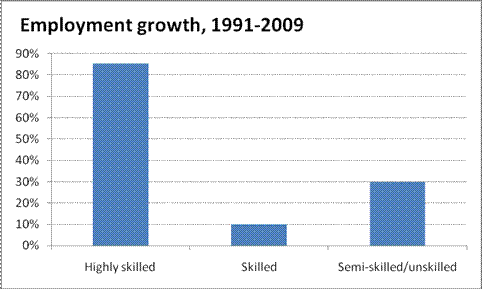How much inequality can we tolerate?
The gap between rich and poor has again increased in New Zealand. The latest inequality report from the Ministry of Social Development shows that in mid-2009 most measures of income inequality rose close to their highest level since the early 1980s.
As in most developed countries, inequality has increased considerably in New Zealand since the early 1980s. The most rapid increase occurred in the late 1980s following the market reforms. The upward trend reversed slightly during the 2000s due to the redistributive policies of the fifth Labour Government, but it tipped up again between mid-2007 and mid-2009.
How concerned should we be about rising inequality? We cannot look at the gap between rich and poor alone; we need to look at the income levels of all households across society. Few would welcome a decrease in inequality if it was accompanied by a decline in income of most households. But we could probably tolerate a rise in inequality if at the same time the incomes of the poor were growing rapidly.
The causes of increased inequality are numerous but changes in employment patterns are a major driver. A simplification of the labour market enables a better understanding of the trends. Consider that there are three broad categories of workers which were of approximately equal size in 1990. The first is the Highly Skilled, which is made up of managers, professionals and technicians. They typically have a degree or level 5 diploma and earn on average more than $30 per hour. In the middle is the Skilled Blue-collar and Office Worker category, which is made up of trades workers, clerks and machine operators. They earn close to $20 per hour on average. Finally, there is the Semi/unskilled category, which is dominated by service workers in the hospitality and retail industry who average about $15 per hour.
Employment in these categories has grown at vastly different rates and it these differing rates that go a long way to explain the rise in inequality in New Zealand.
The number of people employed in the Highly Skilled category has almost doubled in the last 20 years rising from about 480,000 in 1991 to nearly 900,000 in 2009. This growth has been due to a rapid increase in demand for professionals and other highly skilled individuals in the financial, business, IT and telecommunications services and in health, education and government administration. Much of this growth is tied in with technological advances, more sophisticated work processes, and increased spending on education and health.
The Highly Skilled spend a significant amount on eating out, holidaying and enjoying regular retail therapy. Serving these needs requires a large number of service worker’s baristas, waitresses, and cashiers. And hence the strong growth in employment of semi and unskilled workers. This group has grown by 30%, from 1991 to 2009.
But what about those in the middle of the income spectrum? Employment of Skilled Blue Collar and Office workers has grown very slowly only 10% over nearly two decades. Many of these workers have been the losers from globalisation and technological advancement. Skilled workers in the manufacturing sector have lost jobs as many manufacturers have moved offshore. Skilled office workers such as typists, book keepers and bank tellers have become redundant through the computerisation of the workplace.
The trend of strong job creation at the top and the bottom of the skill spectrum, while the middle shows little growth, is often referred to as the hollowing out of the labour market. It is this hollowing out that has been a major driver of rising household inequality in New Zealand.
A further contributor has been the growth in the number of households with both partners in employment. In 1984 only 50% of households had both partners working; this had risen to 70% by 2009. The entry of the second partner into paid employment boosts a household’s income considerably and collectively this increases the number of higher learning households and raises inequality.
The palatable aspect of the growth in inequality is the rapid growth in the number of people enjoying middle class lifestyles. The rise in inequality in New Zealand is not just about the rich getting richer. It is about the number of well off households expanding rapidly. The proportion of households earning more than $80,000 per year after tax (after adjusting for inflation) has risen from 15% in 1984 to 24% in 2009.
If a major objective of government policy is to create an economy that offers well paying, highly-skilled jobs then considerable progress has been made in the past two decades. Indeed, more than 70% of new jobs created over this period were highly skilled and the proportion of total jobs that are highly-skilled is marching towards 50%. The continuation of this trend will create ever greater opportunities for workers to move into well remunerated work. The challenge is to ensure that young people entering the labour market and those in lower-skilled jobs are given every opportunity to obtain the skills necessary to take advantage of highly-skilled opportunities as they arise.























